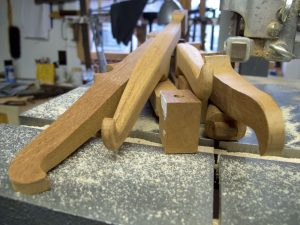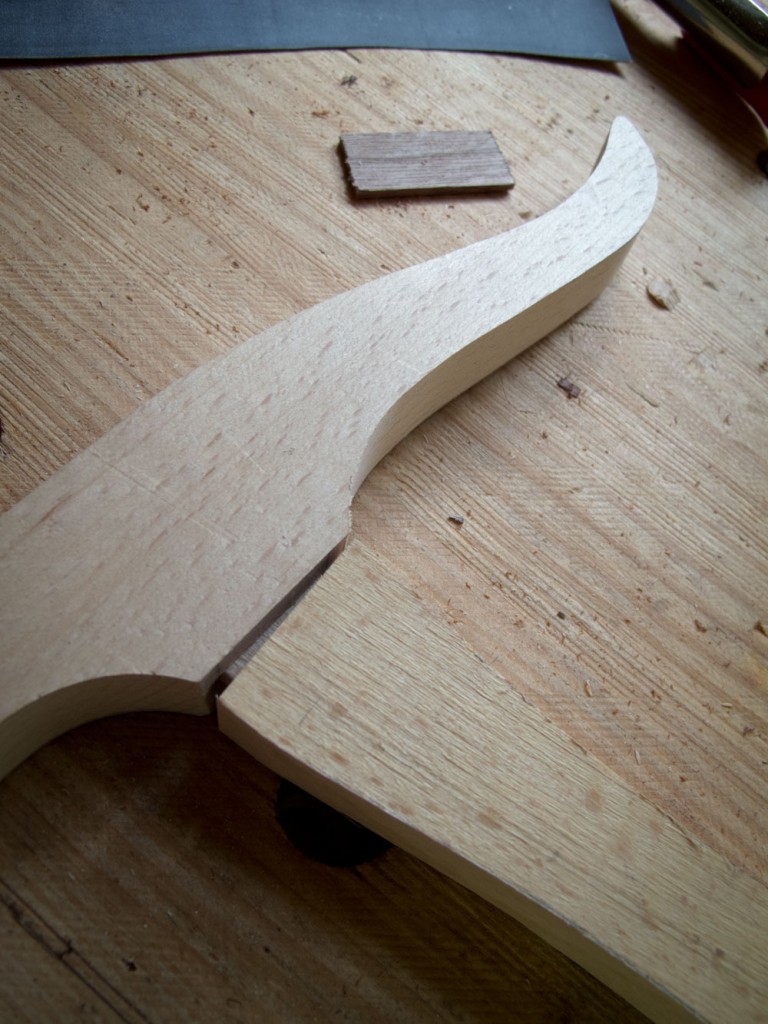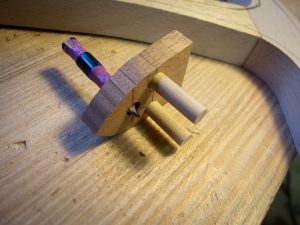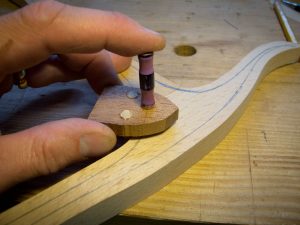We may receive a commission when you use our affiliate links. However, this does not impact our recommendations.
I leave for Germany in a couple weeks to teach classes on making Roorkhee chairs (piece of pie!) and bowsaws.
Yup. Making bowsaws. You’ve probably seen my international treatise on bowsaws: “Bowsaws: An Anthropological View of Three Sticks and Some Cat Innards.”
No? Well that’s because I haven’t written it. I’ve used and owned many bowsaws and frame saws since I started with Popular Woodworking in 1996 – we had a big one powered by a band saw blade – but I’d never made one from scratch. Until last week.
My German hosts at Dictum GmbH asked if I could teach a weekend class on making a bowsaw. As I can drill holes, cut wood and rasp corners, I said yes.
But last week I panicked. I didn’t want to copy one particular design (like the one from Tools for Working Wood) and I wanted the saw to be easy and fun to build. No wacky blade keepers or kooky curved stretchers.
So I threw myself into finding a design that I really liked and tried to work out the kinks in construction. Now, five bowsaws later, I am close.
Thanks to sawmaker Andrew Lunn, I found some curved cheeks that I really liked from a vintage saw he loaned me. Thanks to Tools for Working Wood, I got some simple hardware that is easy to install. And thanks to my little offset gauge, the saw’s frame is easy to make.
What’s an offset gauge? It’s a shopmade tool I’ve had in my kit every since I made my first Welsh stick chair. It’s a way of scribing a line a certain distance away from a curved edge. The real magic to the gauge is the fact that you have two 1/4” dowels that follow the curvature of your work and keep your pencil steady and on one point as you move the gauge. It’s a fantastic way to draw in curved chamfers on a chair or saw frame or anything shapely.
You can make these marks by eye, but a little offset gauge makes the process foolproof. And you then have crisp (not vague) lines to work to with your rasp.
Tomorrow I have to turn handles and make a toggle for this saw. But now that I have the frame roughed in (after five attempts), it should be no problem.
— Christopher Schwarz
Want to build the coolest bowsaw I’ve ever seen? Check out the article by Willard Anderson on his reproduction bowsaw in the November 2011 issue of Popular Woodworking Magazine. It’s available for download here.
Here are some supplies and tools we find essential in our everyday work around the shop. We may receive a commission from sales referred by our links; however, we have carefully selected these products for their usefulness and quality.













Love the bow saw idea. I’ve often thought of making one ever since i saw Tage Frid using one back in the 70’s
at RIT. Maybe someday… 😛
Duh! I’ve been making boomerangs for 25 years, and this is just the tool I need for marking out the airfoils. So far, I’ve used my fingers as a fence to guide the pencil, but your gauge looks foolproof indeed.
Thanks for sharing!
The williard anderson saw was a real study in bowsaw engineering and beauty. How (and why) is yours different? Forgoing the sliding toggle nut? the tapered pins?
Hi Chris,
I made a bow saw from the TFWW plans and kit and I love it. One problem I had was getting the “winder” the right length so it wasn’t too long to take the last tension needed for a singing blade or too short so that, when in full tension it didn’t slip off and rap my knuckles. To solve the problem I made an oval bobbin grooved for the twine and a 1/2 inch square hole. I then shaped a piece of walnut into a 1/2 inch square by about 5″ long. This is a tight sliding fit in the bobbin. Now when I tension the blade I slide it through the bobbin so it spins free and when it is tight enough I slide it down so that it rests across the full with of the cross bar. My knuckles love it.
I was looking at a fancy aka expensive coping saw to cut dovetail waste. I thought you might have a bow saw to do the same job.
CHRIS, WHERE CAN I get blades for my bowsaw.Thanks Chris
The shame….I thought you were a western woodworker. What’s next Roy Underhill using a tape measure?
I am now officially excited about building a bow saw (aka turning saw). Definitely got it on my ‘to do’ list as soon as I get my wood working storage licked (working on it!!), build my first ‘real’ work bench (as a prelude to building my real, real workbench using a hunk of laminated 2-1/4″ thick maple) and finish the plaster board on the walls in my wife’s work room. Guess which task has the highest priority?
The offset gauge is awesome Chris. Thanks for sharing that.